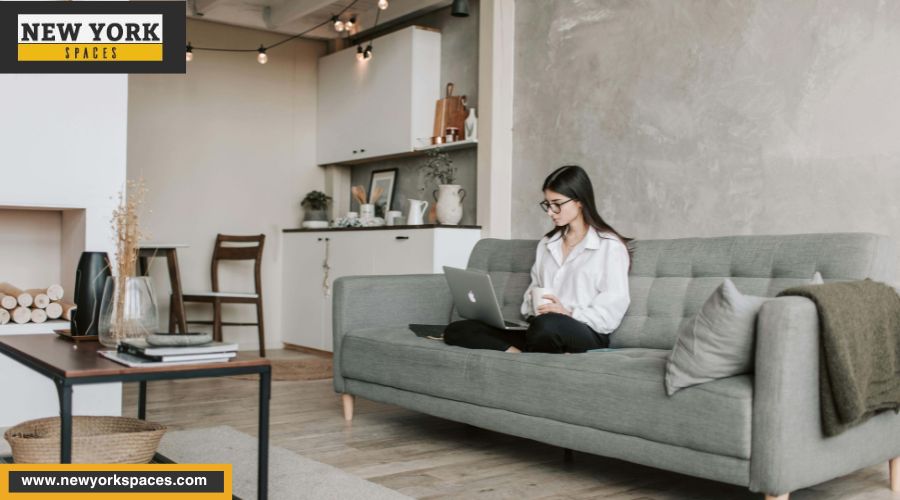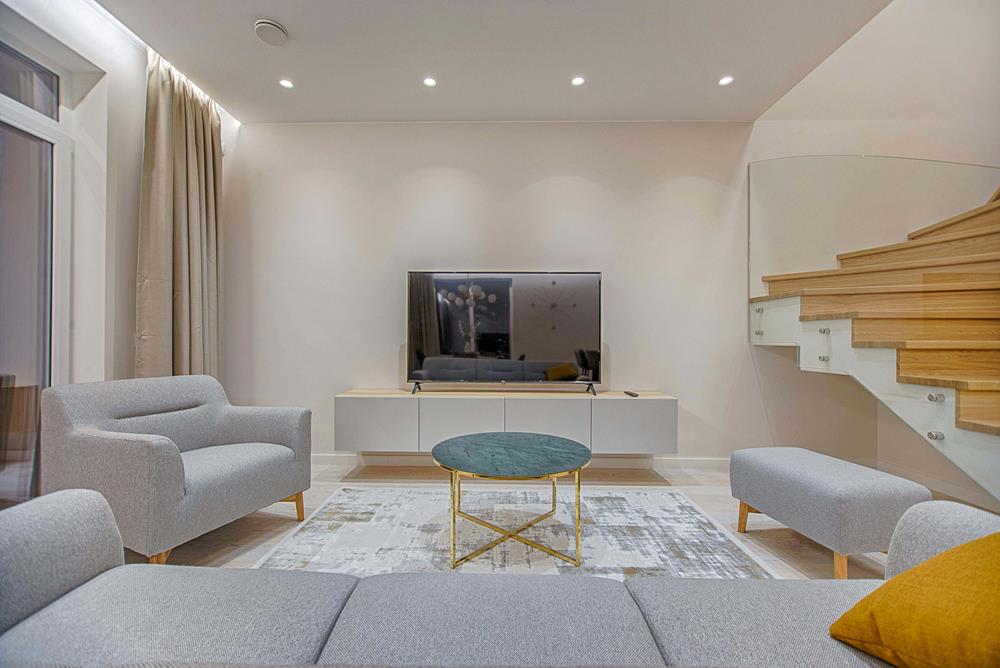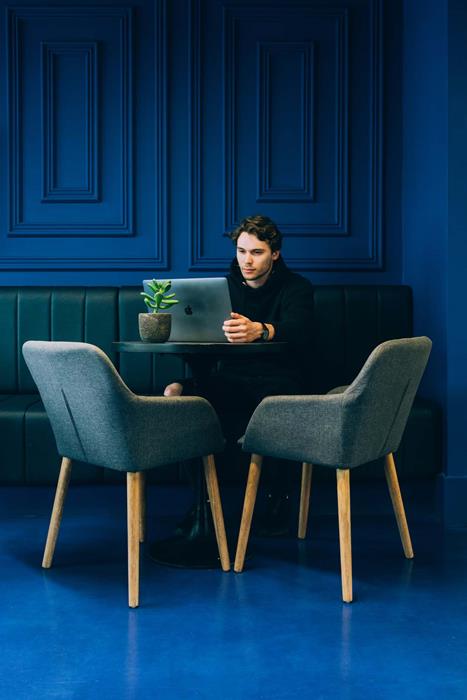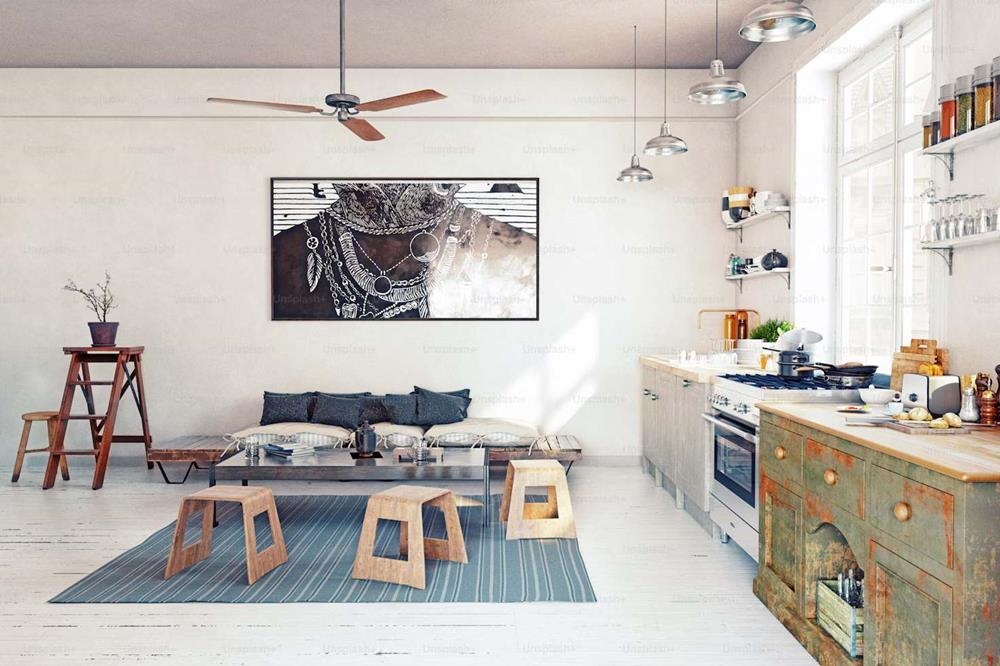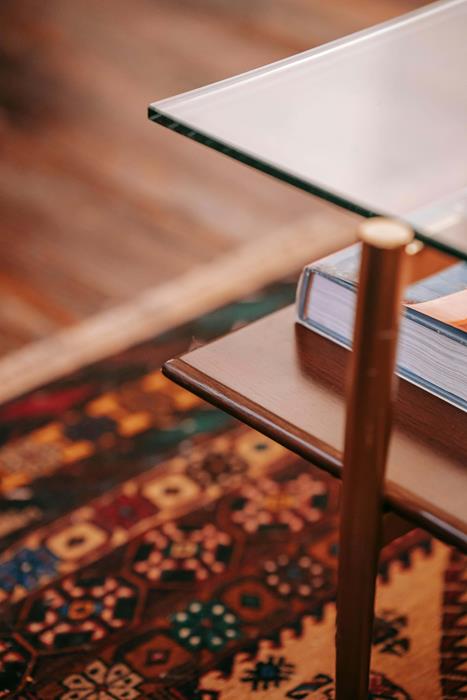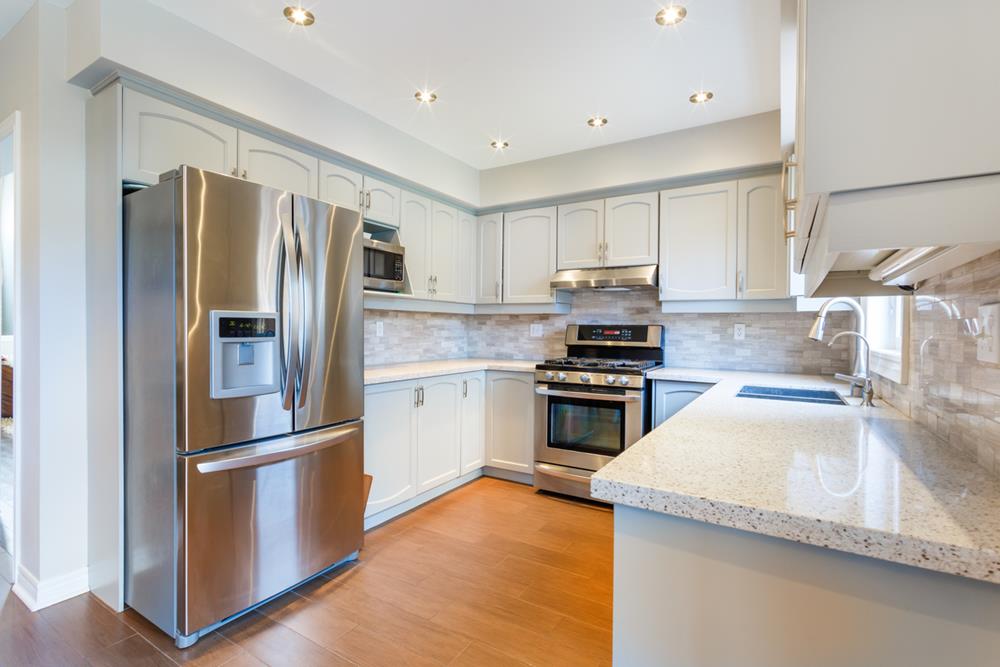As we journey back to the 2000s, a decade known for its unique blend of innovation and nostalgia in the realm of interior design, it’s fascinating to uncover the decor trends that once filled our living spaces. This era, a melting pot of bold statements and minimalist approaches, brought forth a collection of styles that have since faded into the background, overshadowed by the ever-evolving aesthetic preferences of today. From the warmth of shabby chic to the sleekness of stainless steel appliances, each trend tells a story of a time when they were the epitome of style.
As we revisit these forgotten trends, we’re reminded of how they shaped our homes and, in many ways, reflected our collective aspirations and dreams. It’s a journey not just through the pages of interior design history but through the very spaces we called home, offering a glimpse into the past that feels both familiar and surprisingly distant.
1. The Rise of Minimalism
The 2000s saw a significant shift towards simplicity in home design, marking the rise of minimalism as not just a trend but a lifestyle choice for many. This movement, characterized by its “less is more” philosophy, brought a sense of calm and order to living spaces, countering the chaotic pace of everyday life. It was about creating rooms that were both functional and serene, where every piece of furniture and decor had a purpose and a place.
Influence on Home Decor
Minimalism’s influence was profound, pushing homeowners to declutter their spaces and choose quality over quantity. This wasn’t just about having fewer things; it was about valuing the space as much as the items within it. The minimalist approach encouraged open, airy spaces, clean lines, and a monochromatic color palette, making rooms feel larger and more inviting.
Popular Minimalist Designs
Among the popular designs of this era were sleek, low-profile furniture pieces, statement lighting fixtures that doubled as art, and the use of natural materials like wood and stone to add warmth without clutter. Glass coffee tables, modular sofas, and minimalist wall art became staples in homes, embodying the minimalist ethos with their simplicity and functionality.
2. Bold Paint Colors
After years of playing it safe with neutrals, the 2000s broke the mold by welcoming bold paint colors into the home. This trend was all about expression, allowing homeowners to inject their personality into their spaces with vibrant hues that made a statement.
Trend Overview
The move towards bold colors was a response to the desire for more personalized, energetic spaces. It was a rebellion against the beige and white palettes that had dominated the previous decade, offering a way to add character and mood to any room. Whether it was a fiery red for the dining room to stimulate appetite and conversation or a calming blue for the bedroom to promote relaxation, bold colors transformed homes into more dynamic and expressive environments.
Popular Colors of the Decade
Some of the decade’s most popular colors included deep eggplant purples, rich teal blues, and bold lime greens. These colors were often used on accent walls as a way to add depth and focus to a room without overwhelming it. Kitchens and bathrooms saw a particular affinity for these vibrant hues, with many opting for colorful backsplashes or statement walls to add a burst of energy to these functional spaces.
3. Shabby Chic Decor
In the 2000s, shabby chic decor emerged as a beloved trend that combined the old with the new, celebrating the beauty of imperfection and femininity. This style was all about creating a warm, welcoming space that felt lived-in and loved, a stark contrast to the sleek, minimalist trends of the same era.
Trend Explanation and Characteristics
Shabby chic decor is distinguished by its use of distressed furniture, soft pastel colors, and vintage fabrics and patterns. Think of a cozy cottage with plush, overstuffed sofas covered in floral prints, whitewashed wood furniture that shows a bit of wear and tear, and an abundance of soft lighting and lace. This style encouraged mixing and matching, creating a unique, eclectic environment that felt personal and inviting.
Contrast with Other Trends
While minimalism focused on the ‘less is more’ approach with clean lines and monochromatic color schemes, shabby chic was its antithesis, celebrating the ‘more is more’ philosophy through texture, pattern, and color. This trend was a response to the craving for homeliness and nostalgia, offering a retreat from the modern world’s harshness and a homage to the grace of bygone eras.
4. Bamboo Flooring
As environmental awareness took root in the 2000s, bamboo flooring surged in popularity, offering an eco-friendly alternative to traditional hardwood. This trend reflected a growing commitment to sustainability in home design, blending eco-consciousness with style.
Popularity of Bamboo as an Eco-Friendly Option
Bamboo flooring gained traction for several compelling reasons. Firstly, bamboo is a highly renewable resource, growing to maturity in just a few years compared to the decades required for hardwood trees. This rapid regeneration made it an attractive option for those looking to reduce their environmental footprint. Furthermore, bamboo floors are known for their durability, versatility in style, and natural beauty, providing a sleek, modern look that could complement any interior design.
Comparison to Traditional Hardwood Flooring Trends
Traditional hardwood floors have long been cherished for their elegance and timelessness, but they come with a heavier environmental impact. Bamboo flooring offered a compelling alternative, boasting similar aesthetic appeal and structural durability while promoting environmental sustainability. Unlike the uniform appearance of traditional hardwood, bamboo floors provide a unique pattern, varying in color and grain, adding a distinct character to homes. This comparison highlighted not just a shift in materials but a broader movement towards more responsible, sustainable living choices in home design.
5. Tech-Inspired Decor
As the digital age accelerated in the 2000s, the influence of technology began seeping into our living spaces, giving rise to tech-inspired decor. This trend was about more than just the practical incorporation of gadgets into our homes; it was about celebrating the sleek, futuristic aesthetic that technology embodies.
Influence of Emerging Technology on Home Decor
The rapid advancement of technology transformed not just how we lived but also how we wanted our homes to look and feel. Spaces became smarter, more connected, and visually aligned with the sleek, minimalist design of our favorite gadgets. This era saw an increased integration of home automation systems, wireless technology, and even furniture designed to accommodate our tech-savvy lifestyles.
Examples of Tech-Inspired Furniture and Accessories
Furniture with built-in charging stations, glass-top desks that resembled touchscreens, and TV stands that mirrored the sleekness of flat-screen panels became staples in modern homes. Accessories like LED lamps, digital photo frames, and even sofas with built-in speakers reflected a desire to blend technology seamlessly into our living environments. This decor trend not only made our lives more convenient but also turned our homes into a reflection of the modern, digital world.
6. Moroccan Influences
The 2000s also witnessed a surge in popularity for Moroccan-inspired decor, introducing vibrant colors, intricate patterns, and exotic elegance into Western homes. This trend was about bringing the allure of distant lands into our everyday spaces, creating a sense of escape and adventure within the comfort of our homes.
Description of Moroccan Decor Elements
Moroccan decor is characterized by its rich color palette, including hues of blue, red, orange, and gold. Key elements include intricate tile work, ornate lanterns, plush ottomans, and luxurious fabrics. Patterns are bold and intricate, often featuring geometric shapes and floral designs that invite visual interest and a sense of warmth.
Incorporation into Western Homes
Western adoption of Moroccan influences was often about adding splashes of color and texture to otherwise neutral spaces. A single Moroccan-themed room or accents, like a patterned rug, a set of lanterns, or a collection of throw pillows, could transform a room into a vibrant, inviting space. This trend allowed homeowners to experiment with bold designs and exotic touches without committing to a full cultural overhaul, blending Moroccan elements with contemporary or traditional Western decor to create unique, personalized living environments.
7. The Return of Wallpaper
After years of painted walls dominating interior design, the 2000s marked the triumphant return of wallpaper. This was different from the wallpaper many remembered from decades past; it was bolder, more artistic, and often served as a statement piece in a room.
Resurgence of Wallpaper with Bold Patterns and Designs
The new wave of wallpaper brought with it an array of bold patterns, vibrant colors, and even textured designs that could transform a room. From large, floral prints that felt like works of art to geometric patterns that added depth and dimension, wallpaper became a tool for personal expression and visual impact. It allowed homeowners to create feature walls that captured attention or envelop entire rooms in a cozy, patterned embrace.
Contrast with Previous Decade’s Preferences
In contrast to the 1990s, when neutral paint colors and textured wall treatments were the norm, the 2000s wallpaper trend was all about making a statement. This shift reflected a broader desire for customization and personalization in home decor, moving away from one-size-fits-all solutions and towards creating spaces that reflected individual style and personality.
8. Stainless Steel Appliances
Stainless steel appliances became one of the defining trends of 2000s kitchen design, symbolizing the blend of functionality and sleek aesthetics that homeowners craved. This trend turned the kitchen into a showcase of modern sophistication.
Trend Towards Stainless Steel in the Kitchen
The shift towards stainless steel appliances was significant, marking a departure from the white or colored appliances that had been popular in previous decades. Stainless steel offered a clean, uniform look that could complement any kitchen design, from the most traditional to the ultra-modern. Its reflective surface added a touch of brightness and visual space to kitchens, making them feel larger and more open.
Reasons Behind the Popularity of Stainless Steel
Several factors contributed to the popularity of stainless steel appliances. Their durability and resistance to corrosion made them a practical choice for busy kitchens. Additionally, the material’s professional-grade appearance appealed to homeowners who wanted to emulate the look of a chef’s kitchen. Stainless steel’s neutral color and sleek finish also made it incredibly versatile, capable of blending with various kitchen styles and color schemes. This combination of aesthetic appeal, durability, and versatility ensured that stainless steel appliances became a coveted feature in homes across the globe.
9. Open Shelving in Kitchens
The 2000s saw a significant shift in kitchen storage, with open shelving emerging as a popular design choice. This trend was driven by both aesthetic and practical considerations, offering a blend of form and function that appealed to homeowners looking for a more personalized kitchen space.
Aesthetic and Practical Reasons Behind Open Shelving
Open shelving introduced a new way to display kitchenware, from beautiful dishware to unique culinary gadgets, turning functional items into decor. This approach not only added personality to the kitchen but also made everyday items more accessible. The visual openness of shelving made kitchens appear larger and more welcoming, breaking away from the closed-off cabinets of the past.
Examples in Kitchen Design
- Displaying a collection of vintage plates or colorful mugs to add a splash of color and charm.
- Using natural wood shelves to bring warmth and texture to a modern kitchen.
- Strategically placing shelves to keep cooking essentials, like spices and oils, within easy reach.
- Incorporating plants and cookbooks among the dishes for a lived-in, homely atmosphere.
10. Accent Walls
Accent walls became a creative outlet for homeowners in the 2000s, allowing for a bold splash of color or pattern in otherwise neutral rooms. This design choice was about creating a focal point, adding depth and interest to spaces without the commitment of wallpapering or painting an entire room.
Purpose of Accent Walls
The concept behind accent walls is simple: to draw the eye and add dimension to a room by painting, wallpapering, or texturing one wall differently from the others. This could transform the mood of a space, define certain areas within an open plan, or serve as a backdrop for artwork or furniture.
Popular Colors and Patterns
- Deep blues and rich reds were often chosen for their depth and ability to add warmth.
- Metallic finishes and glossy paints introduced a touch of glamour and sophistication.
- Textured wallpapers, with patterns ranging from geometric shapes to floral prints, added visual interest and tactile appeal.
- The use of stripes or stenciled patterns offered a DIY-friendly option for adding personality to a room.
The trend of accent walls reflected a broader desire for personalization in home decor, allowing homeowners to experiment with bold design choices without overwhelming a space. Whether through a pop of color or an intricate pattern, accent walls provided a simple yet effective way to inject personality and flair into any room.
11. Textured Fabrics
The 2000s saw a cozy revolution in home decor, with textured fabrics taking center stage. This trend was all about adding visual interest and tactile comfort to spaces, making rooms not just beautiful to look at but also inviting to touch.
The trend of Using Textured Fabrics
Textured fabrics brought an extra layer of depth to interiors, transforming flat, monochromatic schemes into rich, engaging environments. This trend was evident in various home elements, from upholstered furniture and curtains to throw pillows and blankets. The idea was to mix and match textures to create a space that was as interesting to explore with your hands as it was with your eyes.
Popular Textures and Their Impact
- Velvet: Luxurious and soft, velvet adds a touch of elegance and comfort, often used in sofas and cushions.
- Suede: This smooth, matte texture was popular for its subtle sophistication, making it a favorite for chairs and headboards.
- Linen: Known for its natural, breezy feel, linen brought a light, airy texture to curtains and beddings, perfect for creating a relaxed atmosphere.
- Faux Fur: For a hint of glam and coziness, faux fur throws and rugs were irresistible, adding warmth to any corner.
12. Oversized Furniture
In the 2000s, interior design took a comfortable turn with the trend towards oversized furniture. This era embraced the idea of living spaces as havens of relaxation and casual gathering, reflected in the popularity of large, plush furniture pieces.
Preference for Large, Comfortable Furniture
The trend was driven by a desire for ultimate comfort and a laid-back lifestyle. Oversized sofas, deep armchairs, and expansive sectionals became focal points in living rooms, inviting families to sink in and relax. This furniture was not just about size; it was about creating an enveloping sense of comfort and ease, where every seat was the best seat in the house.
Effect on Room Layout and Design
The inclusion of oversized furniture required thoughtful room layouts to avoid overcrowding. It encouraged open floor plans and minimal clutter, allowing the furniture to breathe and become the centerpiece of the space. This trend also shifted focus towards quality over quantity, where a few well-chosen, large pieces made a stronger statement than numerous smaller items. The result was living spaces that balanced grandeur with simplicity, offering both visual appeal and unmatched comfort.
In embracing textured fabrics and oversized furniture, the 2000s redefined comfort in the home, making it not just a place to live but a sanctuary for relaxation and personal expression.
Conclusion
As we wrap up our nostalgic journey through the decor trends of the 2000s, it’s evident that this era was a melting pot of innovation, comfort, and stylistic exploration. From the sleek allure of tech-inspired furnishings to the warmth of shabby chic aesthetics, the boldness of accent walls, and the eco-conscious choice of bamboo flooring, each trend offered a unique lens through which to view the evolving landscape of interior design. These trends not only reflect the diverse tastes and preferences of the time but also underscore the cyclical nature of decor, hinting at the exciting possibility of their resurgence in new and imaginative forms.
As we continue to navigate the ever-changing world of design, the 2000s stand as a vibrant testament to the power of creativity and personal expression in transforming our living spaces, reminding us that the essence of home decor lies in its ability to adapt, inspire, and resonate across generations.

